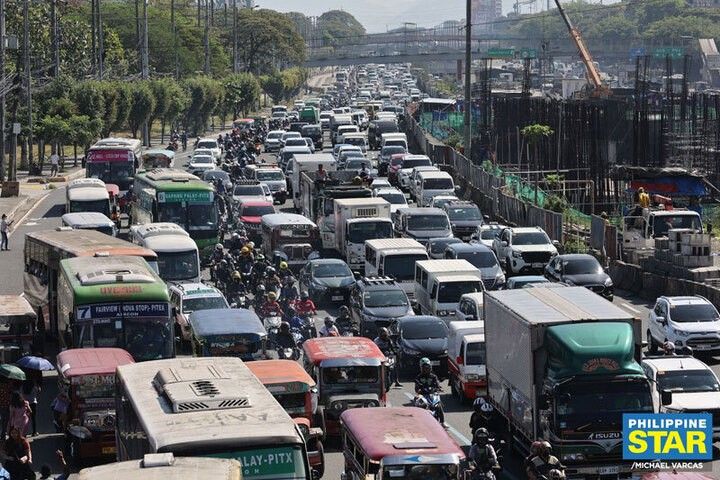Marcos Jr. wants holistic plan to solve Metro Manila traffic woes

MANILA, Philippines — With traffic gridlocks costing the economy billions of pesos, President Marcos has called for a “comprehensive” solution to the country’s traffic woes and has directed agencies to come up with work adjustment plans, National Economic and Development Authority (NEDA) Secretary Arsenio Balisacan said yesterday.
“What the President really wants is a comprehensive, holistic approach to solving the traffic problem – not the piecemeal approach as has been the case all these years,” Balisacan said.
He cited the need to look at intermodal transport systems and see how they operate efficiently as a whole. He noted that the government is building a subway, expressways and bridges linking provinces.
Such projects, he said, have to be seen in the context of all other transport systems including bicycle lanes, motorcycle lanes and feeder roads, as well as the location of industries and residences.
“If there is a chokepoint in one, it affects the whole system. That’s why we really look at it as a system. And that’s the direction of the President,” Balisacan said.
In a statement, the Presidential Communications Office said the government has several ongoing infrastructure projects connecting Metro Manila cities to nearby provinces, including the North-South Railway project linking Metro Manila to Bulacan, Pampanga and Laguna; the Central Luzon Expressway connecting North Luzon Expressway, and the Bataan-Cavite Interlink Bridge.
A 2018 study by the Japan International Cooperation Agency estimated that traffic congestion in Metro Manila is costing the Philippines P3.5 billion a day.
Metro Manila also emerged as the metro area with the worst traffic congestion in 2023, the traffic index of digital navigation site TomTom showed. According to the index, driving ten kilometers in Metro Manila took about 25 minutes and 30 seconds last year, 50 seconds slower than in 2022.
A total of 117 hours were lost per year during rush hours in the area while the average speed during those times was just 19 kilometers per hour.
Big-ticket road projects in April
Three big-ticket roadworks projects are expected to start this month, according to the Department of Public Works and Highways (DPWH)
The EDSA-Kamuning flyover in Quezon City would be retrofitted starting April 25 and is estimated to be finished in 11 months.
The decks, or the platforms where vehicles pass through along a flyover, will be demolished and replaced with new ones, a DPWH representative explained.DPWH said there was a need to repair the EDSA-Kamuning flyover to prevent potential damage and casualties in case a strong earthquake hits.
However, the DPWH will implement partial closure of the flyover which means that one lane would remain open to motorists while the remaining lanes would be off-limits for the repairs.
The flyover along Roxas Boulevard in Pasay City will also undergo repairs for three weeks starting April 5 and will also be under partial closure.
Portions of Roxas Boulevard in the cities of Manila and Pasay will also undergo road reblocking and installation of drainage systems starting April 5 which are expected to be finished in 150 calendar days.
Since it is used regularly by trucks, Roxas Boulevard needed an upgrade to its concrete pavements from the current 23 centimeters to 24 centimeters, according to the DPWH.
Additionally, the DPWH would also perform road reblocking in portions of Tandang Sora Avenue, Bonny Serrano Avenue, IBP-San Mateo Road, Luzon Avenue, Mindanao Avenue, Payatas Road and G. Araneta Avenue in Quezon City, EDSA in Mandaluyong City, and Roxas Boulevard in Pasay and Manila from April 5 to 11, if ever the government declares the latter date a holiday.
The Metropolitan Manila Development Authority (MMDA) allowed the DPWH to perform all the projects round-the-clock, and expects construction to be finished earlier than their respective target dates.
“These projects are necessary for the safety of our motorists and they should not be delayed,” MMDA acting Chairman Romando Artes said.
Artes vowed the MMDA would put in place measures to prevent roads from getting congested, causing traffic jams, due to the road projects.
He also assured the public that the MMDA would study traffic management plans that will be implemented during the constructions, including designation of Mabuhay lanes or alternate routes, zipper lanes, and road clearing operations to “minimize the inconvenience on motorists.” – Ghio Ong
- Latest
- Trending





























